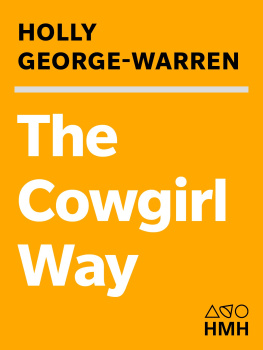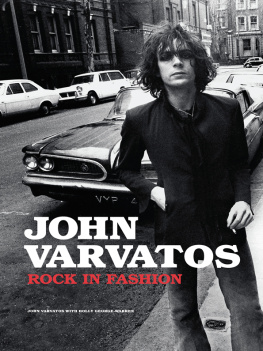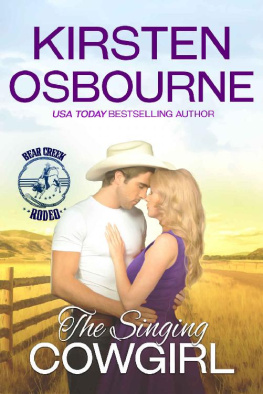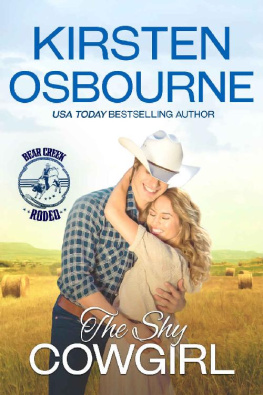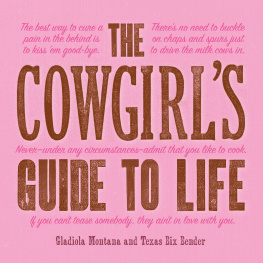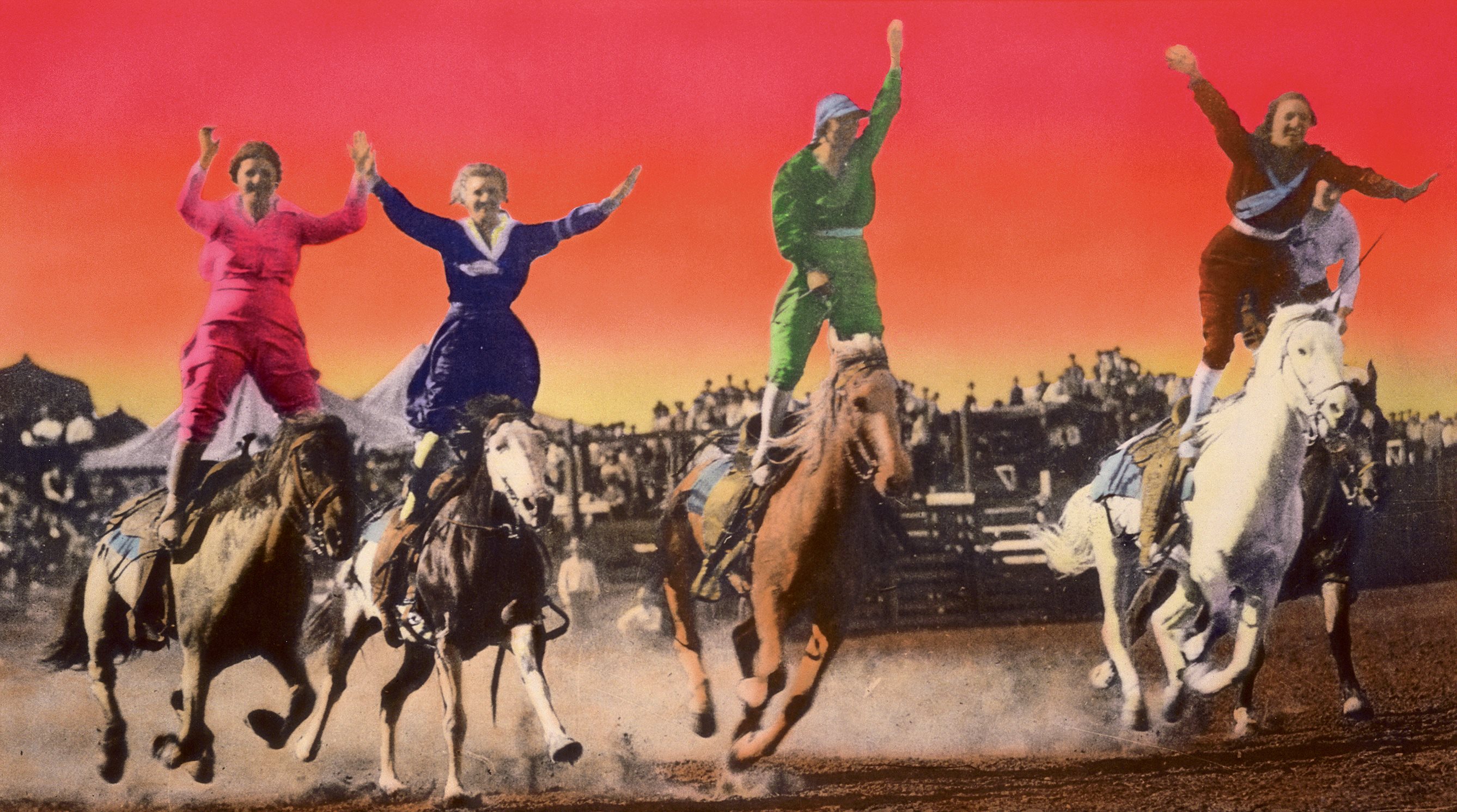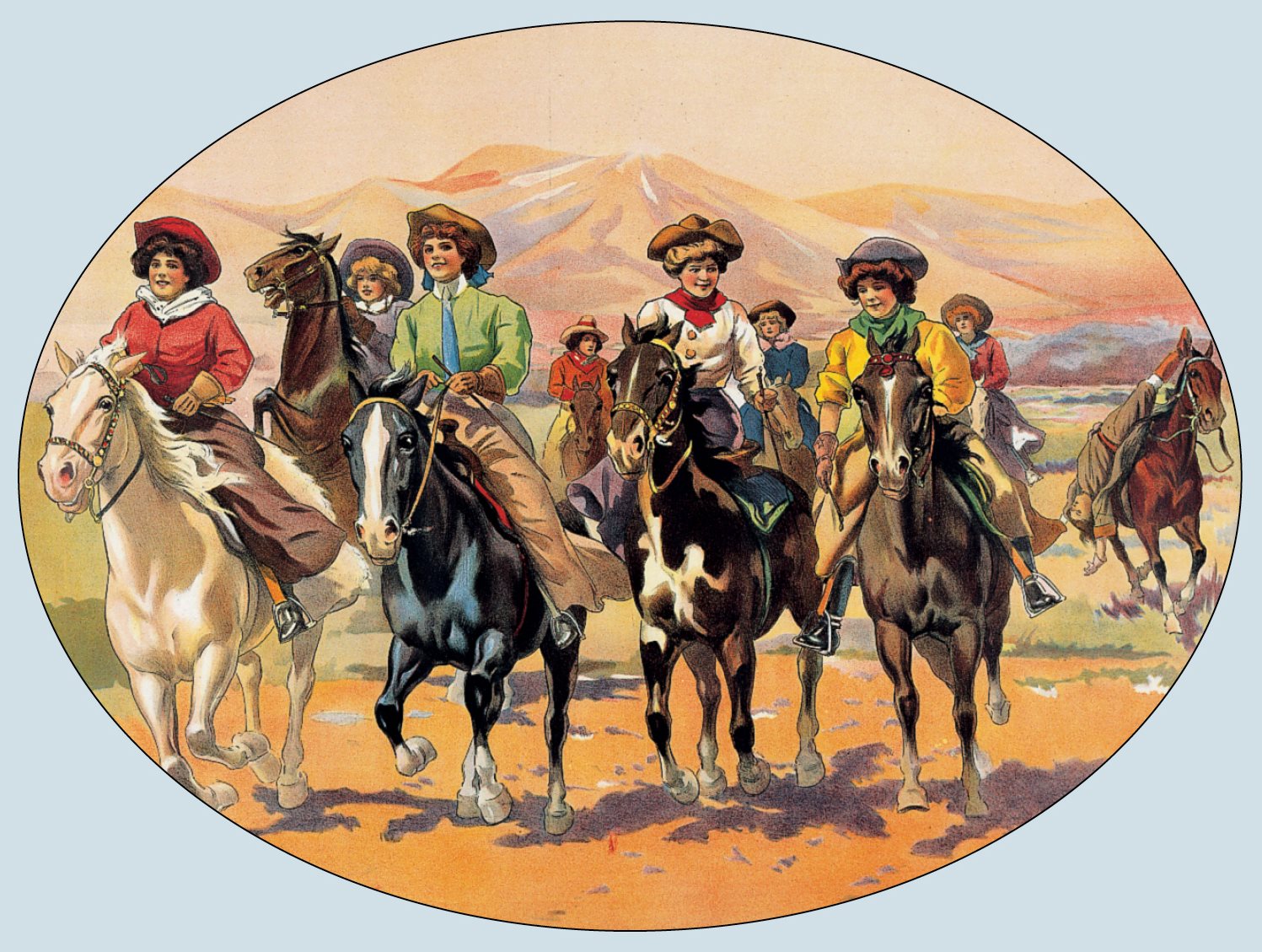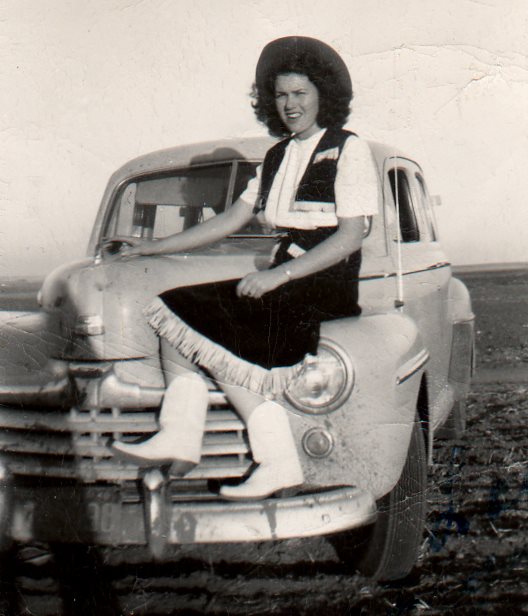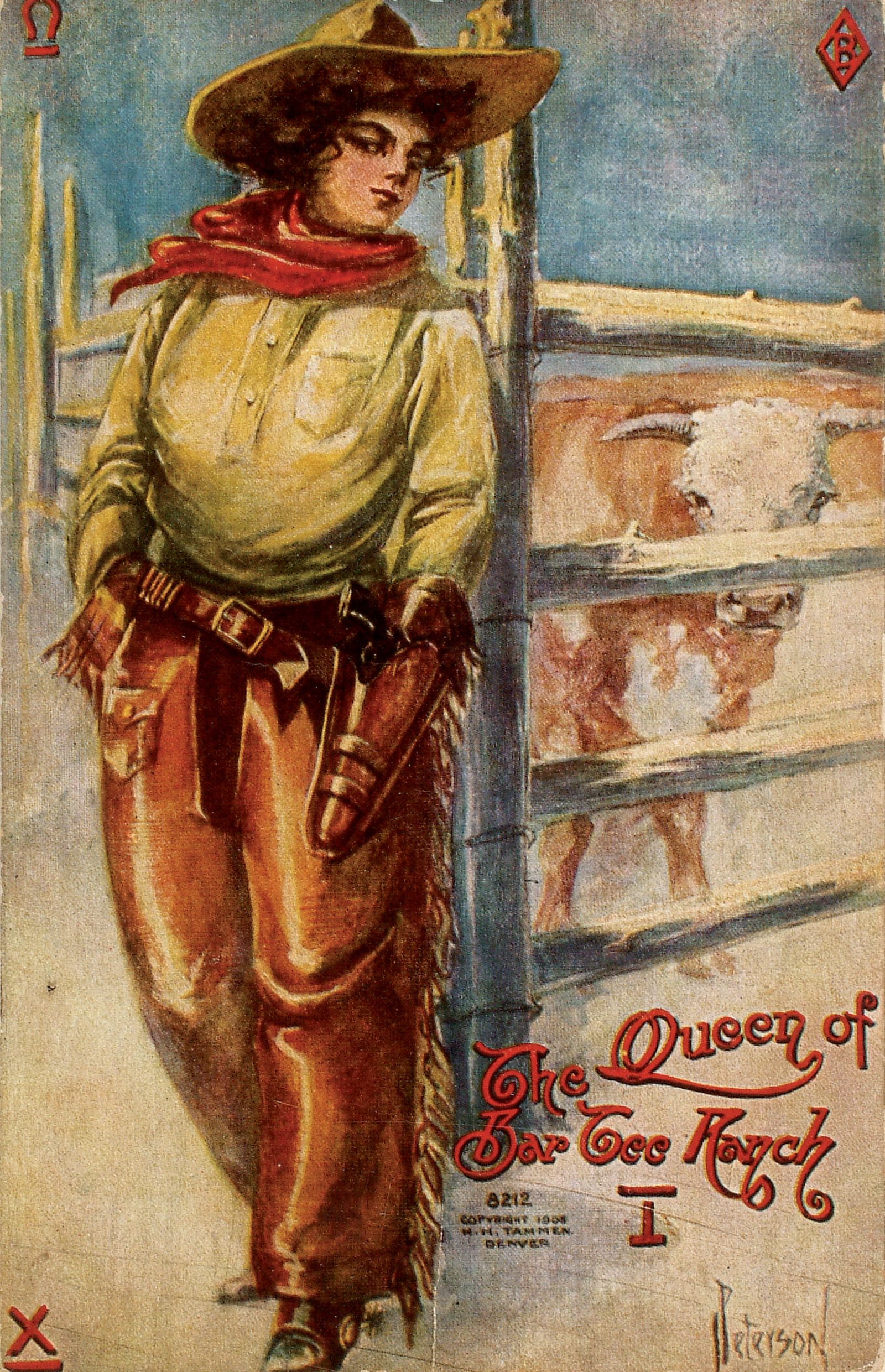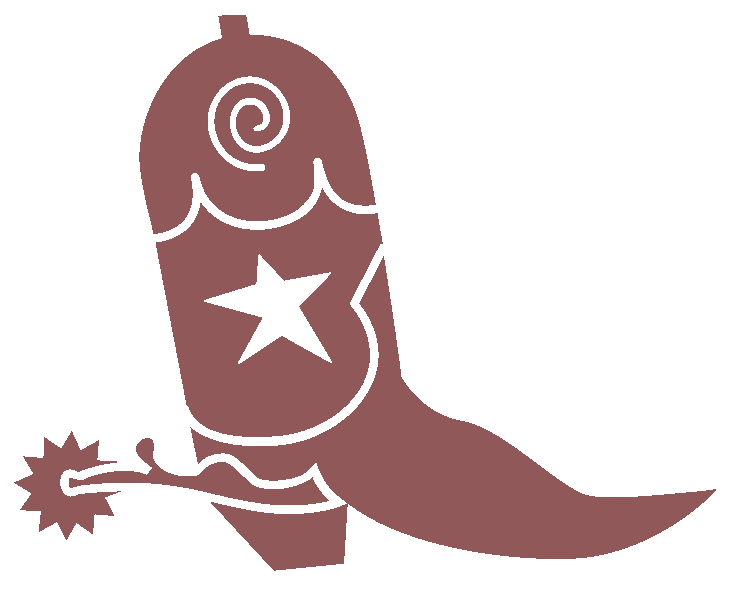Text copyright 2010 by Holly George-Warren
All rights reserved. For information about permission to reproduce selections from this book, write to or to Permissions, Houghton Mifflin Harcourt Publishing Company, 3 Park Avenue, 19th Floor, New York, New York 10016.
Originally published in hardcover by Houghton Mifflin Books for Children, an imprint of Houghton Mifflin Harcourt Publishing Company, in 2010.
www.hmhco.com
Photo credits are found on .
The Library of Congress has cataloged the print edition as follows:
George-Warren, Holly.
The cowgirl way : hats off to Americas women of the West / by Holly George-Warren.
p. cm.
1. CowgirlsWest (U.S.)Juvenile literature. 2. West (U.S.)Social life and customsJuvenile literature. I. Title.
F 596. G 46 2010
920.70978dc22
ISBN 978-0-618-73738-3 hardcover
ISBN 978-0-544-45595-5 paperback
eISBN 978-0-547-48805-9
v2.0216
For Robert and Jack,
who appreciate the cowgirl spirit;
for Ann Griffin, who first got me on a horse;
and in memory of True Westerners
Teresa and Tyler Beard
Introduction
Always saddle your own horse! That was the motto of Connie Douglas Reeves, a Texan who stayed in the saddle until her death at age 101 in 2003. An avowed cowgirl, Connie was part of a tradition that reaches back to the 1800s. Brave, independent, headstrong: women of the West demonstrated that they could tackle the same arduous tasks accomplished by their male counterpart, the cowboy. One hundred and twenty-five years ago, that meant riding the range, rounding up cattle, and capturing and taming, or breaking, wild horses. Beginning in the early 1900s, some cowgirls also performed in rodeos, appeared in movies, and sang on the radio. Over the past century, cowgirls have owned ranches and raised cattle, horses, and sheep. Today, while some cowgirls still live on ranches and some perform in rodeos, others simply enjoy horseback riding as a hobby.
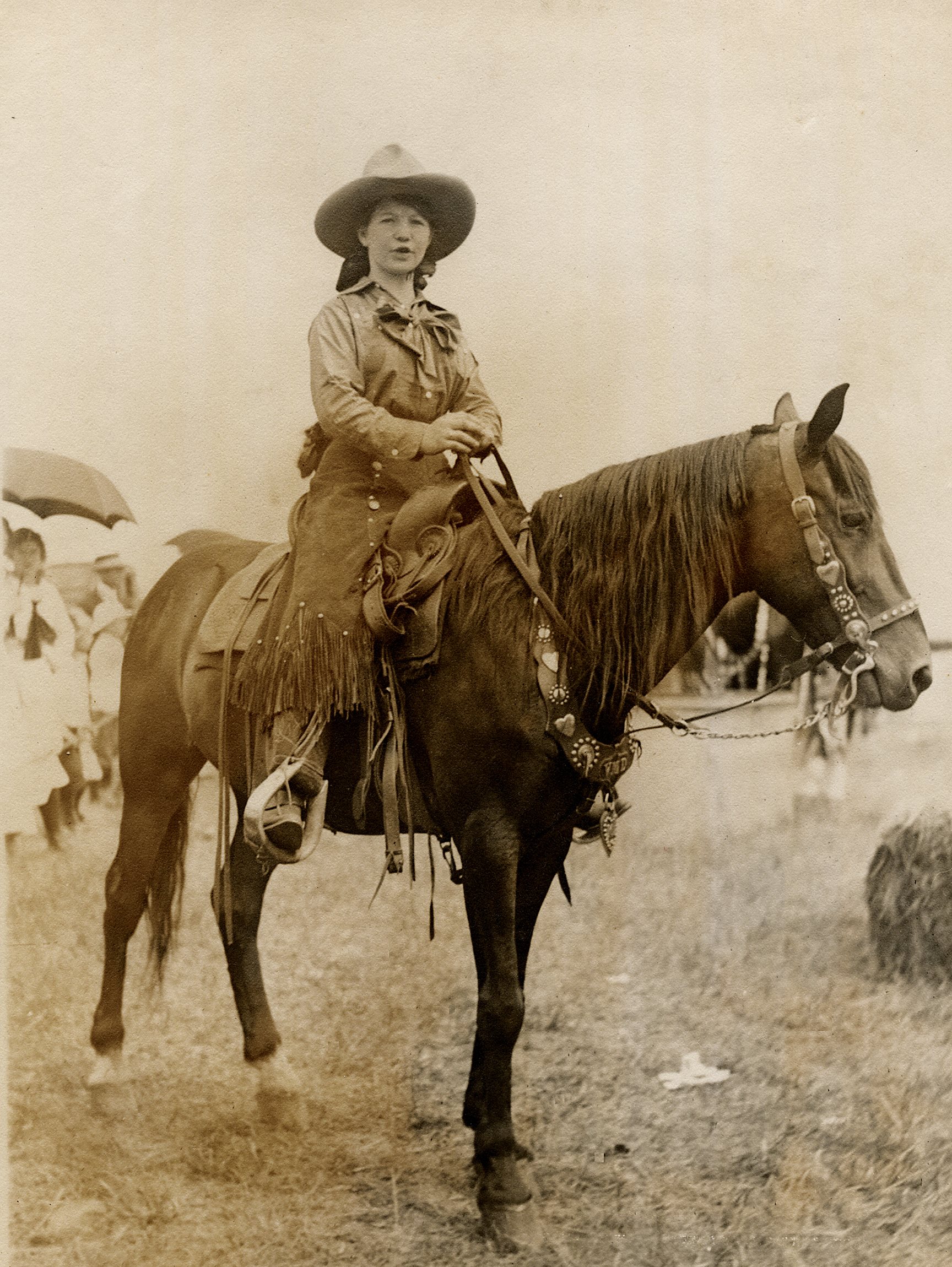
One of Americas early cowgirls.
In the most literal sense of the word, a cowgirl is a woman, or girl, who works outdoors with livestock. In the nineteenth century, before the word cowgirl was coined, girls and women who learned to hold their own working with cattle and horses were sometimes called cow-boy girls as they helped settle the western frontier. It wasnt until around 1900 that cowgirl was commonly used to describe women who had become celebrated entertainers in Wild West shows and early rodeos.
More important than what cowgirls do with livestock, though, is a certain spirit that most cowgirls have: spunk, adventurousness, and courage. Some women who grew up on ranches, such as the former Supreme Court justice Sandra Day OConnor, pursue other professions once they become adults. But they never stop being cowgirls at heart. Justice OConnor made that clear in the book she wrote about her life, Lazy B: Growing Up on a Cattle Ranch in the American Southwest. In her native Texas, she had learned to ride and shoot by age eight. Her tenacity and spirit surely helped her become the first woman ever to be appointed to the highest court in the land.

Connie Douglas Reeves teaching horseback riding at Camp Waldemar, in Texas, in the 1940s.
Chapter One
Women of the Old West
I wish every American girl today could take a wagon trip [west]. Our young folks need the self-reliance we learned there. Nobody told us how. We set ourselves a job, then we did it. We used common sense. We helped one another. We didnt whine.
Martha Jane Chappell, who traveled on a wagon train from Arkansas to California in 1869
Before anyone ever heard the word cowgirl, there were women who ventured west. Most traveled with their families in covered wagons, beginning in the 1840s. They moved from crowded eastern cities to settle in western states such as Kansas, Nebraska, Colorado, Wyoming, Montana, New Mexico, Arizona, and Utah. Some wagon trains eventually went even farther, to California, Oregon, Idaho, and Washington.
After the Civil War, more and more people sought new lives in the West. For nearly thirty years, from the 1840s to the late 1860s, the largest migration in the history of our country took place. The Homestead Act of 1860 mandated that 160 acres could be claimed in the west by men as well as women as long as they were twenty-one and unmarried. Though men by far outnumbered women in the early years, by 1870, there were 172,000 women over the age of twenty out west, compared with 385,000 men.
While back east most women lived within societys traditional rules, pioneer women had to adapt to survive the harsh circumstances of their journey and new surroundings. Many began to take on chores formerly done only by men. Wives, widows, mothers, and daughters on farms and ranches were helping to settle the western plains. Some of these women homesteaders learned to master the skills of riding horses, roping cattle and other animals, and shooting a gun when necessary. Pioneer Nannie Alderson, who settled in Montana, believed that the new country offered greater personal liberty than the old.
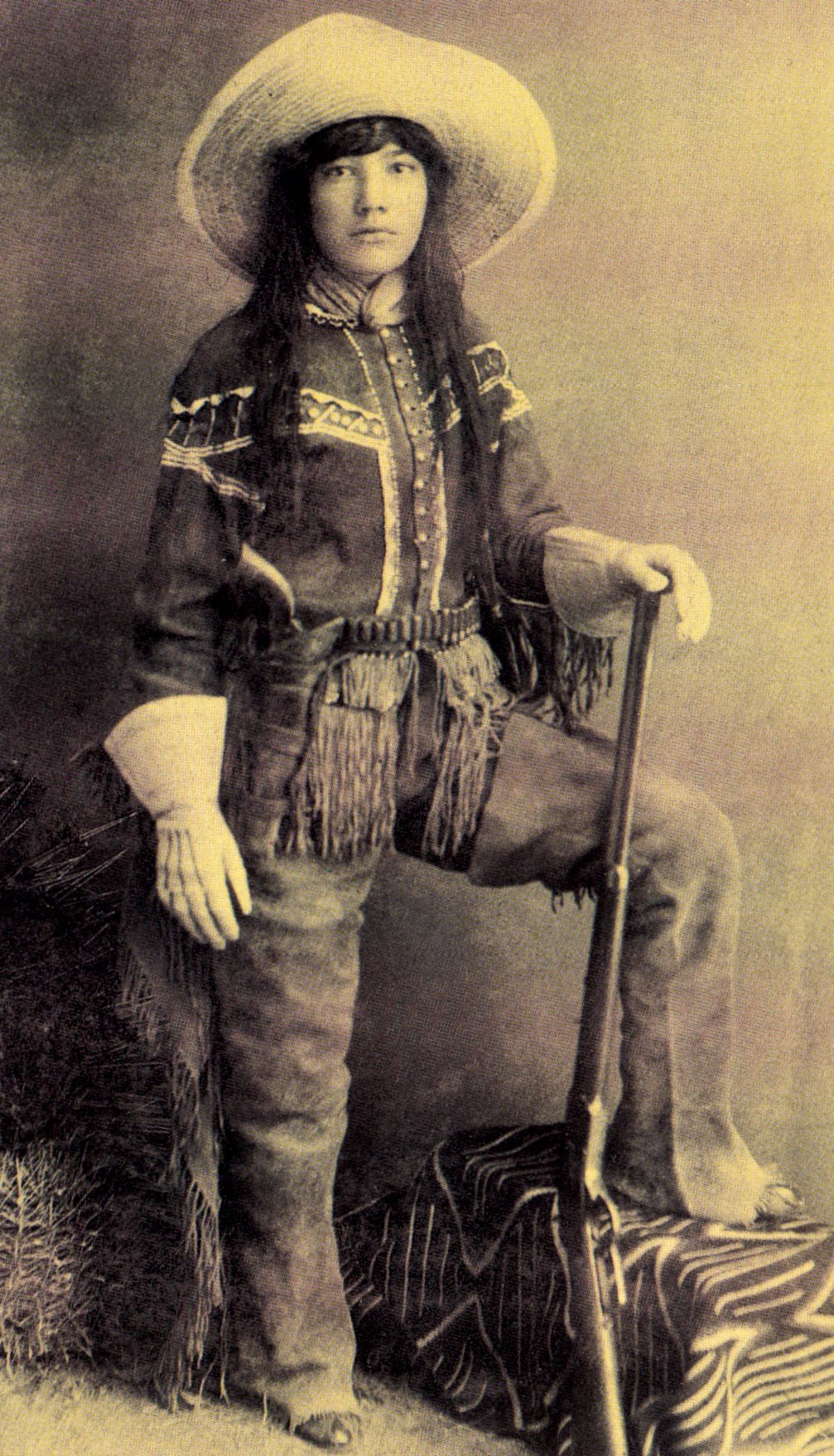
An unidentified woman scout of the late 1800s.
One new freedom for women that grew out of the pioneering way of life involved a change in wardrobe. In those days, women rarely wore pants, and when riding horses, they sat sidesaddle. Their skirts kept them from riding like men, and in any case it was not considered ladylike to do so. One early pioneer woman advised against observing customary attire and riding style while traveling to the West: Sidesaddles should be discardedwomen should wear hunting frocks, loose pantaloons, mens hats and shoes, and ride the same as men, she wrote. The work of settling the new frontier was leading many women to abandon (at least some of the time) the constricting, traditional mode of dress.
Ranch woman and photojournalist Evelyn Cameron wrote about her transition to buckaroo life in Montana and Wyoming in the 1880s. For some twenty years past, there have been cowgirls on Western ranches who are the feminine counterparts of cowboysriding in similar saddles, on similar horses, for the purpose of similar duties, which they do, in fact, efficiently perform. The abolition of the sidesaddle was naturally the first step towards the creation of the cowgirl... I [was] determined to ride astride. With [a] divided skirt, I found it a simple operation to mount into a cow saddle. So great at first was the prejudice against any divided garment in Montana that a warning was given to me to abstain from riding on the streets of Miles City lest I might be arrested!

